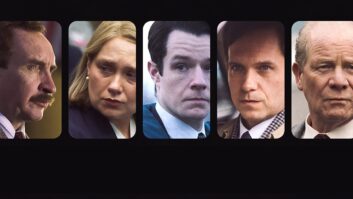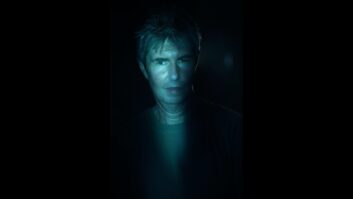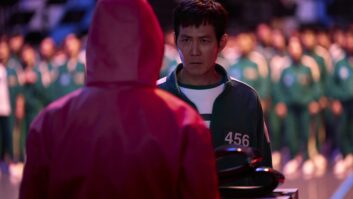Eric Whipp started his career as a colourist in the mid 1990s, specialising in movies. In 2007 he worked with George Miller on the Academy Award-winning movie, Happy Feet, and was reunited with him in 2014 for Mad Max: Fury Road.
Today he is co-founder and senior colourist at Alter Ego in Toronto, Canada’s leading colour and VFX facility. His latest project was yet another collaboration with George Miller – the newly released Three Thousand Years of Longing.
This fim is a contemporary retelling of the story of a djinn (genie). It follows the story of a lonely scholar (Tilda Swinton) who, on a trip to Istanbul, discovers a djinn (Idris Elba) and he offers her three wishes in exchange for his freedom.
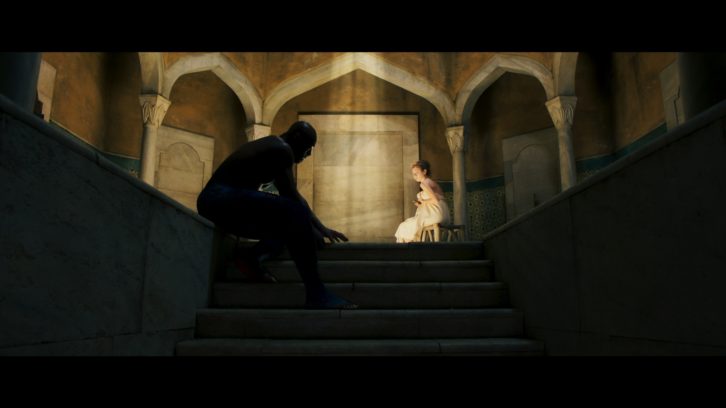
“Having done a few films with George Miller, we already had a good relationship and when George calls, you say yes!”, comments Whipp.
As well as being reunited with Miller, Three Thousand Years of Longing brought Whipp back together with cinematographer, John Seale – who had previously worked with Miller and Whipp on Mad Max: Fury Road – who came out of retirement to shoot the movie with Miller.
Developing the look
Whipp and the team started working on the colour around 15 months before they delivered. “The edit was only just getting to rough assembly mode at that point, but it was enough to start exploring looks and see takes that we were confident would be in the film,” recalls Whipp.
“George is extremely visual and has an amazing eye for detail,” says Whipp. “He loves being in the Baselight suite, as it’s a chance to explore looks and finesse the image. He tends to like richer colours, but if you just dial up the saturation on an image, it generally looks terrible. It’s my job to find ways to achieve a rich colourful image in a nice way that fits with George’s story.”
Whipp recalled how they referred to a lot of paintings for inspiration for the grade. “The idea was to make the hotel room feel very neutral, clean and bright, and then contrast the djinn’s stories with a very storybook/painterly look. Sometimes it might be more like a Rembrandt painting and for other scenes like those war paintings from the early 1800s,” he explains.
Creating colour and VFX in Baselight
Every shot of the film presented a unique challenge either in relation to colour specifically or due to heavy VFX requirements and the team turned to Baselight to help achieve their vision.
“We used so many effects and tools that I never thought I’d use,” explains Whipp. “For example, I used a puddle warp tool for one shot, where the bottle hits the bottom of the ocean.
“For Queen Sheeba we used texture equalizer to create the flawless skin. And there was a huge amount of VFX work in the suite. We created vapour coming off the djinn, sky replacements, ‘Djinn vision’ FX, and very complicated transitions.”
During the grade, Whipp created complicated transitions with smoke, chroma warp, lens blurs and other tools within Baselight, to take the story smoothly from one frame to another.
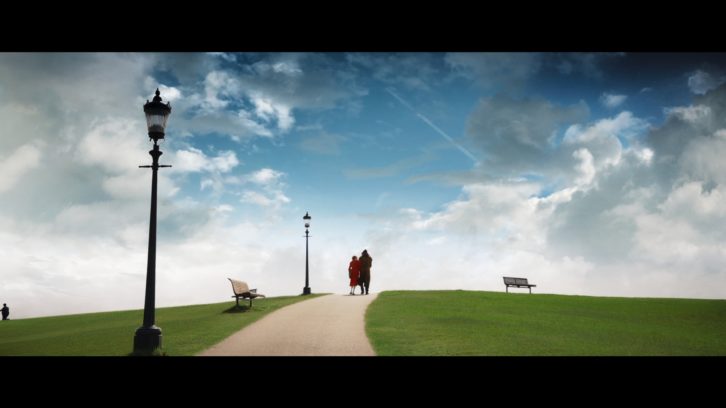
“Due to the way Baselight is architectured, it was possible to do this all in the suite without the need to have VFX involved. This was a bit of a lifesaver, because we were able to keep the grades of the incoming and outgoing shots “live” rather than bake them down and supply to VFX,” adds Whipp.
“The Baselight grading system was an incredible asset to finessing the images”, agrees cinematographer, John Seale. “The visually complex film in flashbacks was aided in the shooting by knowing that grad filtering, vignettes and sun shafts could all be done in post. This was a great saving in time, comfort, and speed of shooting.”
“The ability to reframe shots was a great advantage as was the control of exposure and colour in selected areas within the frame, and in the maintaining of those in continuity of edit,” adds Seale. “Many of the effects in the imaging, i.e., exposure of eyes, shimmering of image, highlights with liquids, were made with full control and ease in Baselight. The ability to reduce any excess movement in handheld or Steadicam shots was a great advantage.”
Challenges
Within the film, the audience is told several stories by the djinn, spanning across three thousand years and four different time periods. Each story needed a specific look to suit that period in time. One of the most challenging parts of the project for Whipp, was to find looks for all the different time periods while still finding a way to keep the film unified.
“The film takes place over 3000 years and there’s no easy way to reference a specific look like that. We did however play into the palettes of the time. The Queen Sheeba scenes have a very rich golden look which we felt might be a way of telling the story of how rich it must have felt to be there at that time,” explains Whipp.
There was also an abstract, dream-like shot of approximately 1.5 minutes long in the movie which Whipp recalled as being particularly challenging.
“For this shot I added vapour coming off the djinn and the surrounding elements. Each piece required several layers of comp. There were about 4-5 layers of wafting smoke tracked to just the Djinn’s shoulder alone using a range of different blending modes. Then we repeated that for the other shoulder, then the forearm etc. I think we ended up with around 160 layers,” adds Whipp.
Margaret Sixel, the editor on the film, had the idea to fade to white at the end of the shot, instead of black.
“I was afraid that a fade to white might look a bit average,” recalls Whipp. “So I had the idea of white smoke that emanates from behind the Djinn and comes toward the camera to fill the frame. Once George saw that, he liked the idea of the smoke filling the room, but also wanted to leave Tilda’s eyes clear at the end, so we had a very graphic white frame with just her eyes remaining.”
Whipp suddenly had an extremely complicated transition to white that needed to be tracked and animated to time perfectly with the edit while leaving just the actresses’ eyes in the frame at the end. This was made extra challenging with the requirement to do this in HDR, as well.
“Fading to pure white in HDR is not a good idea, as 1000 nits of pure white is too blinding, so I had to make this fade work in all the deliverable formats,” comments Whipp.
Another challenge for the team in the grade was working with the two wildly different skin tones of Tilda Swinton and Idris Elba.
“John Seale did an amazing job of ensuring that the lighting on them was beautiful,” explains Whipp. “My task was to, where necessary, bring Tilda’s skin down a touch and ensure she didn’t look too pale, and vice versa with Idris, ensuring that he didn’t appear too dark and that we could see his face clearly. We also tracked and roto’ed every eyeball in this film and added a touch of sharpness and brightness to them.”
The workflow
From start to finish, the process began with set looks off QuickTimes. These were set in ACES (Academy Color Encoding System) and translated to the full res EXR sequences. This meant any of the looks developed on the QuickTimes could be copied over the final images.
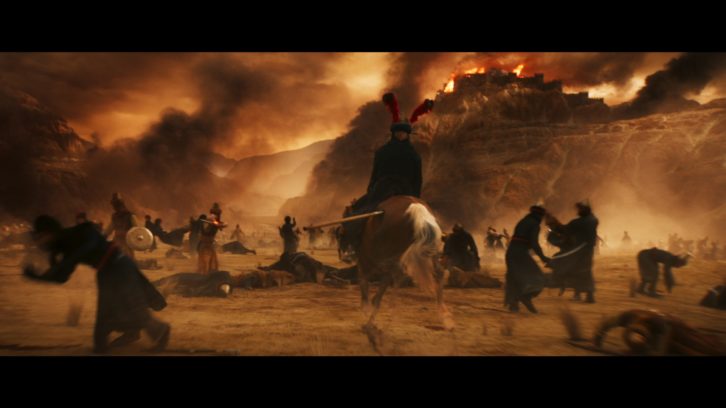
Interestingly, the editing took place in Sydney, Australia, while Whipp worked on the grading in Toronto, Canada.
“We moved high-res images across servers and when it came to live sessions, we streamed 4k images to Sydney for George and John in less than three seconds with almost no perceptual compression,” explains Whipp. “Early on in the process the plan was for me to fly to Sydney to sit with George in person, but this was all happening in the middle of Covid and the lockdowns were becoming an issue. So, we looked into different streaming technologies and found a great result.
“We were also sending Baselight scenes back and forth from Sydney to Toronto, so that at any time a scene could be opened on a Baselight 2 system in Sydney, and vice versa,” adds Whipp.
On the Toronto side at Alter Ego, Whipp was supported by colourist Andrew Ross, as there were a lot of details that required careful shapes and tracking. “Idris’ goatee beard was actually blonde hair when they shot the film,” recalls Whipp. “But after sitting with the film for a while, George decided it would look better if it was red. So, Andrew had the fun job of roto’ing and tracking Idris’s beard in every shot of the film.”
Seale adds, “The Baselight system, used by Eric Whipp at Alter Ego, was a defining factor in attaining the visual mood that the Director George Miller had envisaged for his film.”
The colour team also worked closely with the VFX department to achieve the desired outcome. VFX Supervisor, Paul Butterworth, joined the first several colour sessions, so they could collaborate on how best to achieve their goal.
“There were shots where it was clear that the desired look was too complicated for Baselight, and it would need VFX help, and then there were shots where we took the work off the VFX team, because we could achieve it all in the DI Suite,” explains Whipp.
“We used a lot of mattes, as it’s a great way of tying everything together”, he adds. “Sometimes VFX shots come back and the new background, for example, might be too bright compared to the surrounding shots. With a matte, you can control the background without having to darken the foreground as well.”
“I learned a lot on this project,” explains Whipp. “I really pushed myself on the VFX side of the grading for this film and learned new techniques and tricks which I will definitely use on future projects.”
“One thing that did play in my head the whole time was that this was essentially John Seale’s last film,” Whipp adds. “He had decided to officially retire afterwards, so I really wanted to do him justice and make sure people walked away from this film thinking “the visuals were stunning and beautiful”. I hope we achieved that.”

